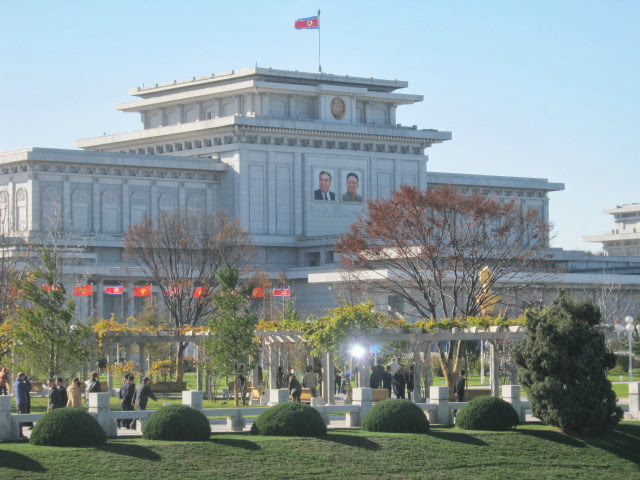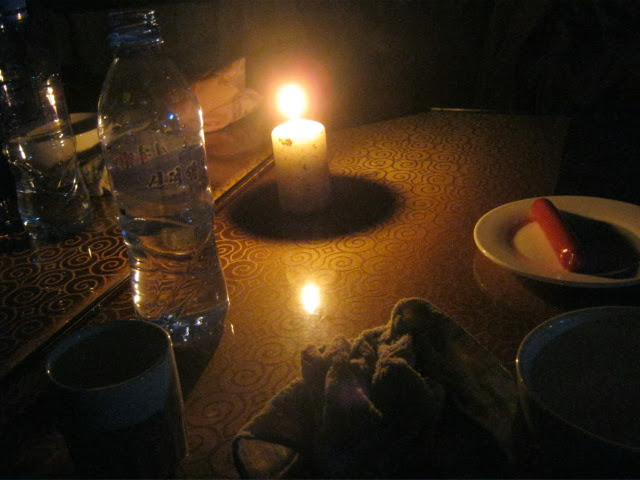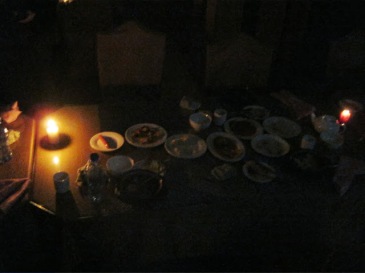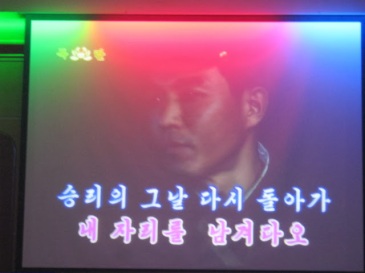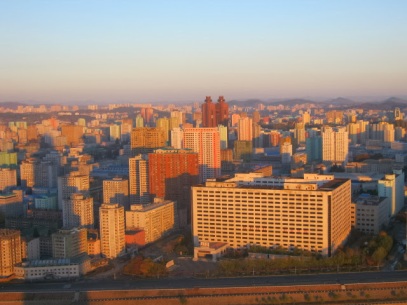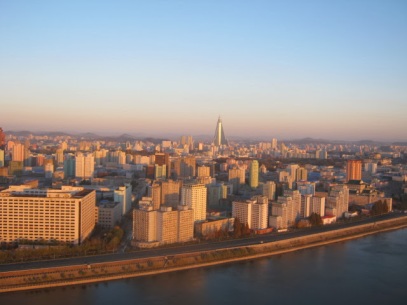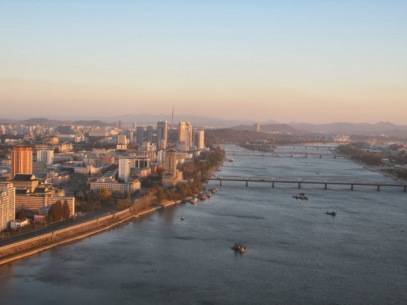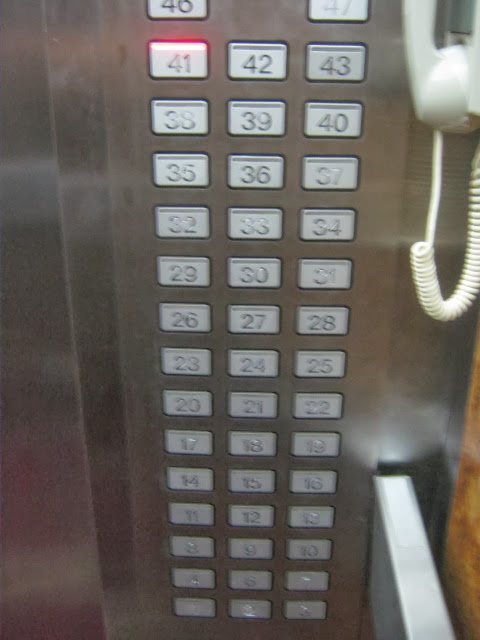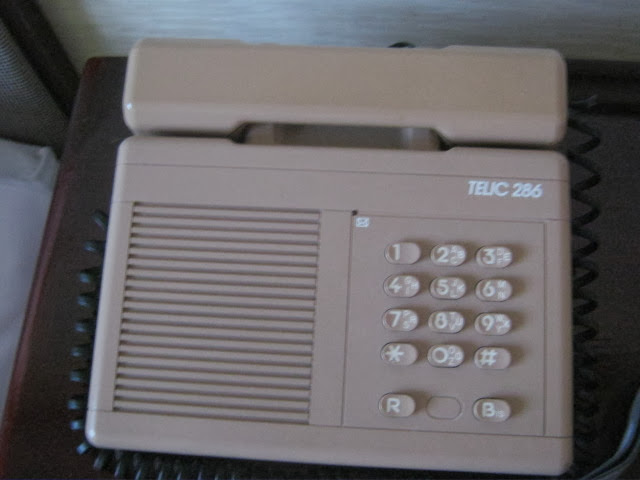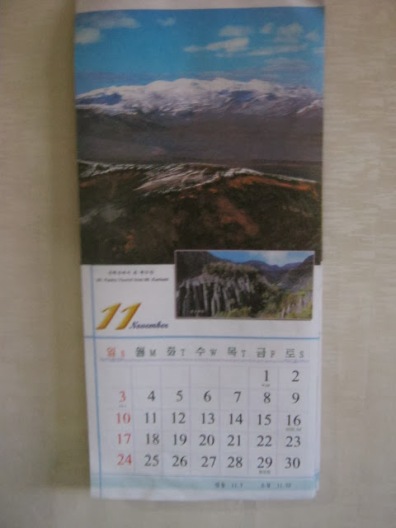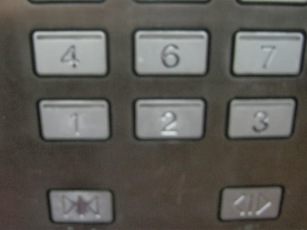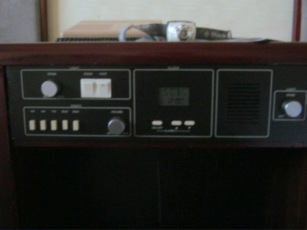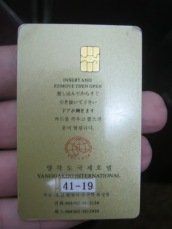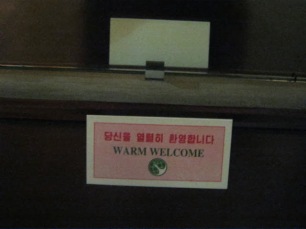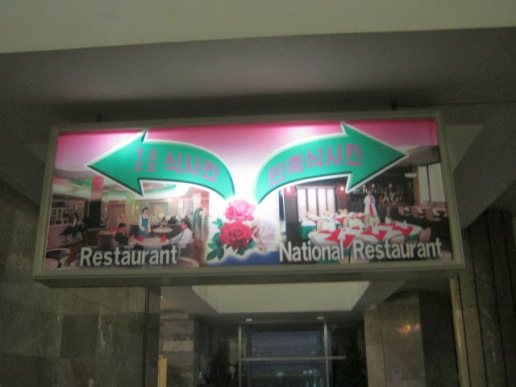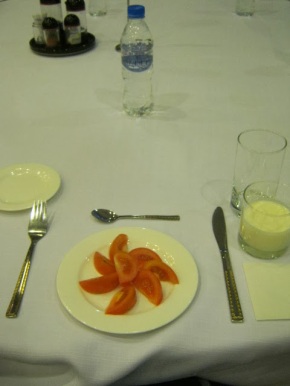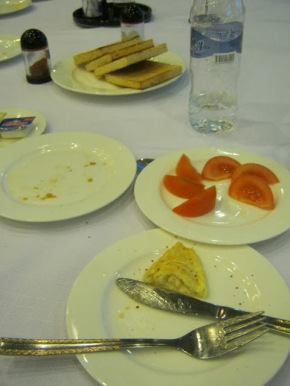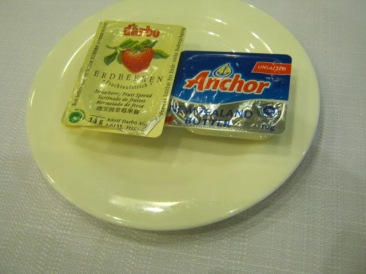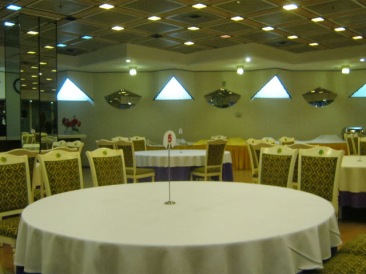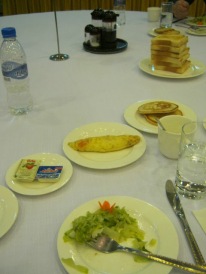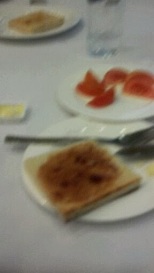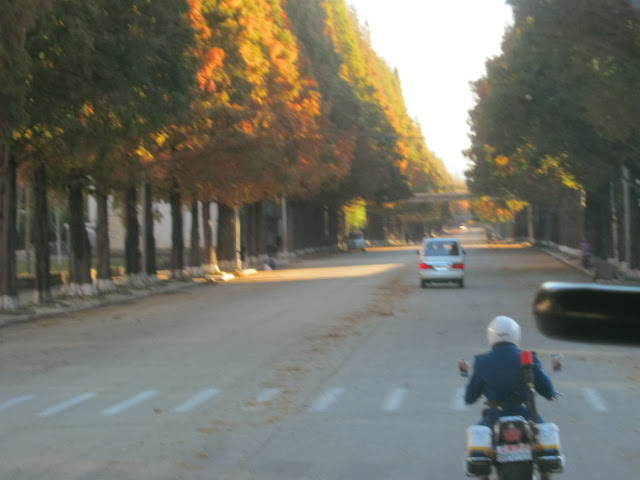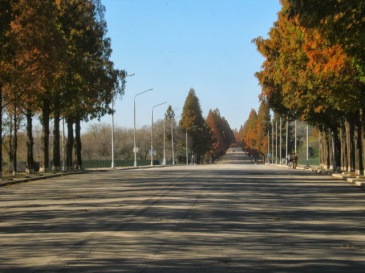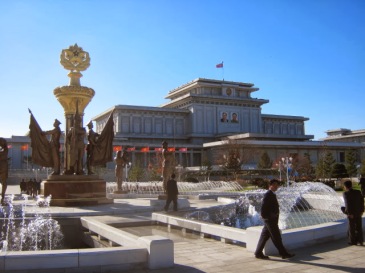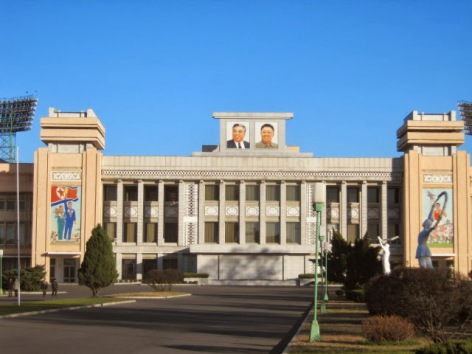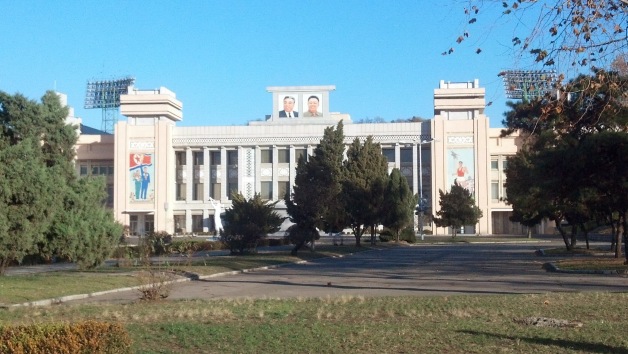This is the second part of a multi-part series chronicling my trip to the Democratic People’s Republic of Korea (North Korea). Part 1 can be found here, and FAQs about the trip can be found here.
After we picked everyone up, we headed out for dinner. The restaurant was pretty dimly lit from the outside. We went into the building, and were told that on the first floor, there is a gift shop, and on the second floor, there’s the restaurant. I’m not sure why it was set up as such, but for whatever reason, this is how all of the restaurants we went to were set up. I originally thought maybe this was only for the tourist restaurants, but after seeing locals eating at other restaurants, i confirmed this was not the case. As I walked up the stairs, I saw a huge poster, “Welcome, Korea International Travel company (the name of the government tour agency leading our tour). I realized that this was probably the restaurant that all the tour groups get taken to on their first night, and adjusted my expectations accordingly.
We were the only ones in the dining room, which had a table that had already been set for us. Lots of pink. Napkins were neatly folded in a flower arrangement. Several bottles of water and beer were on the table. More Korean propaganda videos were on the wall. As soon as we were seated, our guides left us.
They first brought out some very unappetizing-looking hot dogs (no bun) with a lot of the casing still visible. I passed. There’s no way this was authentic North Korean food. The waitresses then bring out several more courses (all without comment): scrambled eggs (these were surprisingly good, and in general, nearly all of the meals on the trip featured really simple yet delicious egg dishes), some bean sprouts, steamed/sauteed cabbage and other veggies, something fried, and some kimchi. It was generally pretty good, nothing amazing (kimchi wasn’t bad, but not spicy enough for me; I honestly think my kimchi was better than theirs). They then bring out a bowl of rice with some veggies on top. not sure if this was a pathetic attempt at bibimbap, but either way, it was nothing too special (though not terrible either once mixed all together), and some mostly clear soup, which we apparently were supposed to pour over the rice and veggie dish (another common theme throughout our meals). The lights went out for a few seconds, then came back on.
Our guide Rim then came back in, mostly dodging our question about why he didn’t eat with us. He pointed to the kimchi, explaining that this is a traditional Korean dish, which I initially rolled my eyes at, then remembered that most of the people came from countries where there were very few Koreans (and Korean restaurants), and what may have been obvious to me about Korean cuisine as a San Francisco resident may not be to them. The lights went out again, then came back on. At this point, there was then another Korean party at another table, and they actually received a menu, which seemed to have some pretty cool-looking pictures.
Rim then went over the rules of the trip: “We respect our dear leaders from the bottom of our hearts” [points to his pin of the Kims]. – I later ask him if i can acquire one for myself while in the DPRK, but he says no; apparently you have to be given one by the government, though the others in the group tell me they’re pretty widely available in China. “Which means if you have a newspaper with the picture of our leader, you do not crease or fold it across the picture of him, you do not throw it away”, and so on. He went on to explain that we are not to go off by ourselves at any point during the trip (though he does mention that our hotel for the night, being on an island, allows us some chance to walk around outside, but nowhere too far). He emphasized the importance of formal dress for the mausoleum that we were going to the next day, where we would see the bodies of Kim Il Sung and Kim Jong Il lying in state. He also told us to not go to the fifth floor of the hotel, which is not accessible by the visitor elevators, but is accessible by the staff elevator as well as the staircase. here’s why. At some point while Rim is talking, the lights went out for a third time, and this time they did not come back on. As if this is a regular occurrence, the waitresses proceeded to bring us candles. As we left the restaurant, still in the dark, the waitresses shone flashlights on the stairway to help us down, again acting as if this is totally normal.
After dinner (and after every other event on the trip), our guide Rim always asked us, “Did you enjoy X”, and we all instinctively would say yes, regardless of if we actually enjoyed it, not wanting to offend. He never once commented on our identical reaction to everything
Yanggakdo Hotel
This was the hotel that nearly all tour groups stay at; it is on Yanggak Island in Pyongyang (“do” means island; while the guides explained everything to us, I can’t remember what “yang” and “gak” mean, though I do remember that “Pyongyang” means “flat land”, so maybe something to do with land?). The hotel was enormous; 43 floors in total, plus a revolving restaurant on top (apparently North Koreans love revolving restaurants). There was also a bowling alley, karaoke room, and swimming pool one level down, and two levels down, there was a Macau-owned casino which is open to everyone except North Koreans. I (and the rest of the group) was assigned to the 41st (!!!) floor.
As I walked to the elevator, There were all sorts of pictures on the wall (with English and Korean captions) of Kim Jong Il, Kim Jong Un, and Kim Il Sung, mostly with children, or showing them doing some kind of good, as well as other pictures showing schools, highlighting their wonderful free education, or doctors’ offices, highlighting the wonderful free healthcare, or people voting, highlighting the virtues of being able to freely vote in this wonderful socialist democracy. I recognized these pictures as being identical to ones I saw at the train station, and ended up seeing the same set of photos in many buildings throughout the trip – it appears that the government provides this set of photos to all businesses to display in a public area. There is also a sign in the hall with two arrows, one for “Restaurant”, the other for “National Restaurant.” The “National Restaurant” side has two restaurants, “Korean Restaurant” and “Chinese Restaurant”. The “Restaurant” side also has two restaurants, “Restaurant No. 1” and “Restaurant No. 2”. We are told that breakfast will be at 7am the next morning in “Restaurant No. 2”, and that we will leave the hotel at 8am to go to the mausoleum.
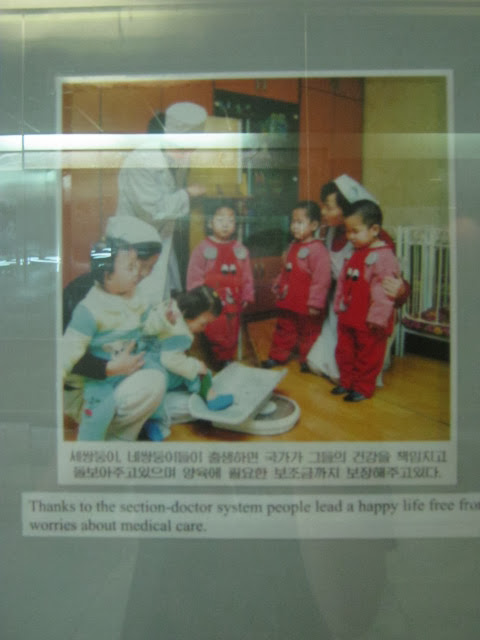
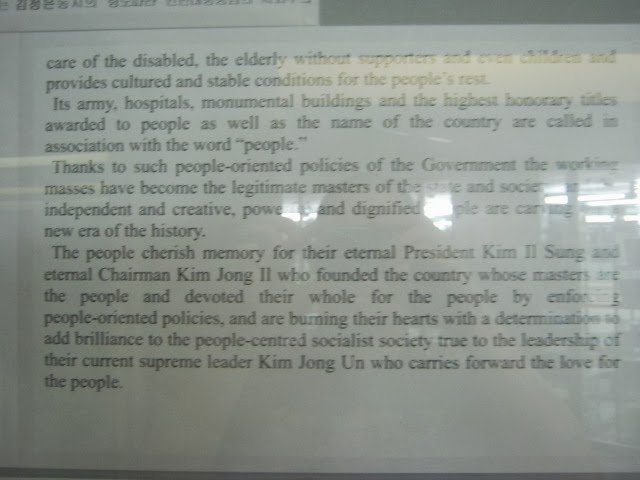
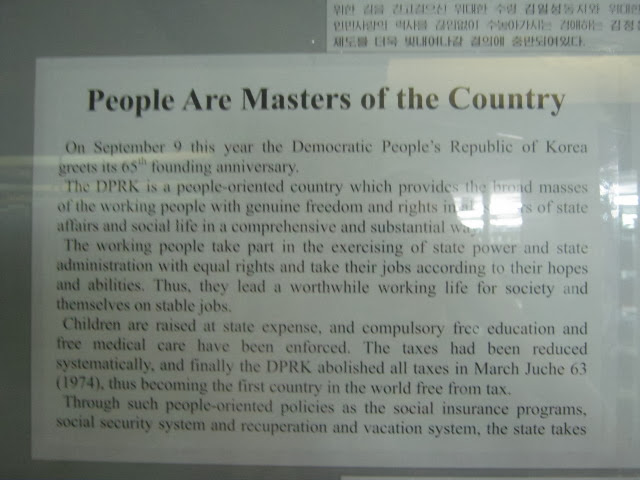
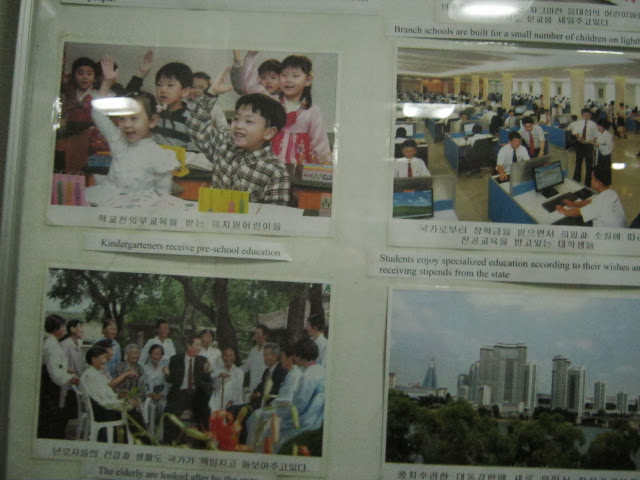
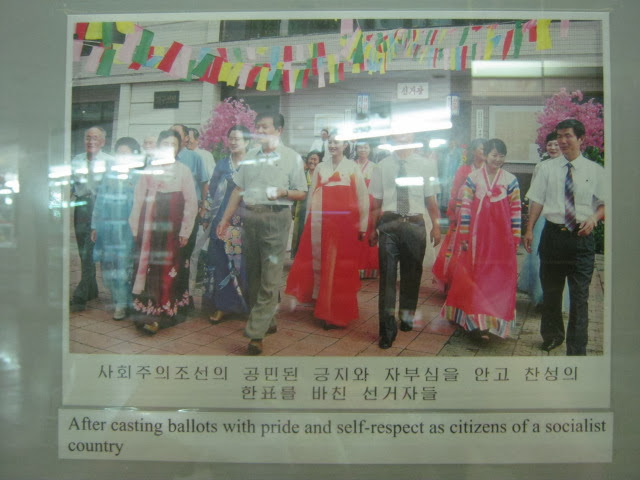
As I was going up to my room, my elbow accidentally brushed against the buttons for floors 21, 24, 27. The elevator stopped at each one, and each floor was pitch black, confirming my theories that they just put everyone at the really high up floors to give them a nice view, and the rest of the hotel is largely uninhabited on most nights, which isn’t too surprising, as the hotel contains around 1,000 rooms but is located in one of the least visited places in the world (even with the recent increase in tour groups, North Korea is still one of the 25 least visited countries in the world).
The room was fairly standard, with some drab colors. There were two single beds typical of the ones found in Asian hotels. There was a small placard that said, “warm greetings.” There was an old-fashioned contraption built into the desk that has a digital clock (not working), and two knobs for turning on the lights, as well as an old-fashioned phone. The view of Pyongyang was nice, though (as to be expected), there are very few lights on for a city of this size with so many tall buildings. The TV didn’t work (though I found out the next day that this was unique to my room, and others’ TVs worked). From what I heard, the channels were mostly North Korean propaganda, but also the BBC, surprisingly. me and The others and I made tentative plans to meet downstairs later to check out the bowling alley/karaoke, but I was so exhausted from jet lag that I ended up passing out on my bed, and so ended my first full day in North Korea.
Breakfast/getting ready
Breakfast was at 7am; we had to be ready by 8am to leave. Preferring to eat first before getting ready (unlike the rest of our group), I got up at around 6:55, threw on a T-shirt and jeans, and took the elevator down to the lobby. I ran into some people from my group who ended up staying up a bit later the night before; they said they went to the revolving restaurant and had absurdly overpriced beer. After being told that breakfast would be in “Restaurant No. 2”, a beautiful waitress dressed in a pink traditional Korean dress greeted us outside and pointed us inside “Restaurant No. 1”. It was a pretty nondescript dining room, with a bar on one side, a picture of the Kims, windows all around (but not much to look at, especially as the sun isn’t quite up yet), and a table set just for our party (most of the tables have not been set). Our table (as is the case throughout the trip) had a Western place setting with fork and knife, rather than the traditional Korean setting with chopsticks and spoon. Again, the napkins were nicely folded into a flower.
They brought us all out each a plate of small tomato slices that had been beautifully arranged to look like petals of a flower. The only problem is that they were significantly underripe,as I could tell from the green-ish coloring. Just to be sure, I tried one, and confirmed that they were indeed underripe. We were asked if we’d like coffee or tea; we all answered coffee, and I’m pretty sure they brought us back cups of instant coffee from a mix, judging by the taste, as well as the fact that there was already some type of cream added. Next, a huge plate of thick white toast slices (perfectly square on all sides) came out for the table (with packets of butter and jam), followed by another huge plate of toast. This was another thing I noticed consistently throughout our meals; we always received an incredible amount of bread to start, regardless of if we had asked for it (perhaps as a filler?). After that, an omelet (delicious, again), and some type of crepe with some cinnamon-like filling inside (also, delicious) arrived. They also had started to play some music in the room, which mostly seemed to be Korean versions of Disney songs (seriously, you haven’t lived until you’ve had breakfast in Pyongyang listening to “Bippity-Boppity-Boo” in Korean).
I headed back up to the hotel room to get ready for the mausoleum. By this time, the sun was up. I opened my window to take a picture of the skyline, and was greeted by a huge chill. North Korea is cold in the winter (not too surprising, given that it is a peninsula pretty far north of the tropics, and after all shares a (small) border with Rrussia). Nonetheless, the view was very nice; especially being on the river, with a nice skyline on either side. Despite being on the 41st floor, there was no screen of any sort, just two easily openable layers of windows. I had a great view of the Ryugyong Hotel, a gorgeous pyramid-shaped hotel (again, with several revolving restaurants at the top which the North Koreans so love), which is the tallest building in Pyongyang. The only catch is thanks to structural issues, it still has yet to open. Despite prominently featuring in several photo shots throughout the trip, the guides never once talked about it except when prompted, always saying that it was “still under construction.” There was no hot water in the shower (again though, a problem unique to my room). I sucked it up, took a cold shower, put on dress pants (actually my amazing Betabrand sweat pants that looked like dress pants), dress shirt, tie, blazer, and headed down to meet the group in the lobby.
Off to the mausoleum
Our guide Oh was already there, smiling as always, complimenting me on my formal dress, asking me how I slept, to which I told her I slept fine. We got on the bus, and headed to the mausoleum. Pyongyang is mostly empty, though it is pretty early in the morning, and Sunday is a day of rest (their only day of rest, as they work and go to school on Saturdays). It was also quite beautiful; we drive down several colorful nice tree-lined streets that could easily have been taken from New England. there were a few people out walking, which seemed pretty normal. We saw the mausoleum from a distance, and it was simply enormous. The driver went around to a side entrance. There was a guard there, who saluted us. Our guides say a few words in Korean to him, and he let us through.
[FYI: the forthcoming trip to the mausoleum was easily one of the most memorable parts of the trip. Sadly, as cameras were not permitted, I have to do my best to recreate everything from memory].
When we got there, they then told us that first, we will hang out in a “waiting room” until they’re “ready” for us to enter. Very odd of course, but hey, it’s North Korea. They told us to empty our pockets of everything while on the bus except for cameras. The waiting room was a mix of tour groups and very well-dressed locals, all with pins of the Kims. The waiting room had what looked like to be several empty ticket counters, and some propaganda magazines, as well as a large picture of the Kims on the wall. After we were given the go-ahead in the waiting room, they lined us up in rows of four, and had us proceed in. It’s a very nice building with lots of marble. We checked our jackets and cameras at the front, then passed through metal detectors. We were in. Patriotic music was playing softly in the background on repeat.
We began marching in, again in four columns, until we reached the first moving sidewalk, where we switched to two. On one side, there was a beautiful river surrounding the mausoleum with several swans (they explained the importance, but I can’t remember). One the other side there was a large outdoor area/courtyard facing two massive pictures of the Kims on the outside of the mausaoleum. That ended, and we turned the corner. There was a series of moving sidewalks that must have easily gone on for over half a mile. They were the slowest I’ve ever been on, but people were not using them to walk faster; everyone was standing in place on them, moving very slowly. On either side were large portraits of the Kims showing them doing various positive things, meeting with various world leaders, etc. The guides were happily explaining each one to us. I actually recognized a few of them from http://kimjongillookingatthings.tumblr.com/, but I kept my laughter to myself. I also tried to ask my guide some questions about Kim Jong Un, but she seemed to be intentionally evasive, not telling me any more about Kim Jong Un than I already knew.
Aside: Given that the guides were obviously in very good standing with the government, when they gave evasive answers or would reply “don’t know” when I asked about Kim Jong Il or Kim Jong Un, it was hard to tell if they really didn’t know, or if they knew and didn’t want to answer. I remember at one point during the trip, I mentioned the late Kim Kong Il’s very expensive Hennessey XO habit to our guide, which he said he had never heard about, saying that he didn’t hear the same stuff that is reported in western media (duh), but he must have had some idea of what went on.
After what seemed like forever, we finally reach the end. Despite a complete lack of signs and several rooms in various directions, our guide knew exactly where to go (she said she had been there “many times”). She told us that we were now going to enter the room where Kim Il Sung’s body lay in state, and that we will, in groups of four, make three bows – one at the front, and one on each side (but not the back). We went in the room; and there indeed is Kim Il Sung lying in state, perfectly preserved. Given that he was probably at about chest level and we had to stand at a distance away from him (therefore it is hard to see his face), I would not have been able to identify the body by just looking at it, but knowing that it is Kim Il Sung, I could definitely see it. Just about everything in the room was red, including the blanket he was draped with. There were guards everywhere. I bowed with my group on three sides, and exited. The next room we went into was a room full of medals and proclamations he’s received from countries all over the world, starting with North Korea (naturally, lots), and then sorted by continent, with more portraits of him above the medals meeting with world leaders. Some of the stuff he’d received medals for was pretty comical (advancing democracy, human rights, etc). The next room had a map showing everywhere he traveled, broken down by train, plane, car, and boat, as well as his actual Mercedes, his personal train, and his personal boat.
We then repeated the same process again for Kim Jong Il, first seeing his body lying in state (thankfully, I repress the voices in my head singing “I’m so ronery” and remain solemn), then the room of medals, then his “transportation room” – though he didn’t have a ship. He did however have a golf cart. The train car (in which he died) appeared to have been preserved to look exactly like it did when he traveled in it. Did you know Kim Jong Il always traveled with a Macbook Pro? I did not! There was also an electronic foot massager below his desk. I forgot to mention; before we went to see each body lying in state, we passed through a little corridor with a bunch of fans blowing cool air (to perhaps brush off anything we had on us that we might bring into the room)?
Next, we went into the “mourning room”, a giant open area with giant statues of the Kims. There was a guide there who worked for the mausoleum who explained in Korean (with our guide translating after the end of each sentence) that this was where we weep for the dear leaders, and all of the sacrifices they made for a better country, all the wonderful things they did, etc. In reality, what she said was longer than than what I’m writing, but I think you get my gist. Everything she said also sounded like she was on the verge of tears after saying it, though she never did actually cry, nor did anyone in our group. We bowed, and moved on. We then began to exit by going back on the same moving escalators, but going the other way. We got our jackets and cameras, and then went to the outside area/courtyard, which was immaculately manicured, with several workers sweeping up pine needles/leaves/the like as we’re out there. Another large picture of the Kims was on the wall. We took a few pictures, then got on the tour bus.
All things considered, the mausoleum was absolutely one of the most elaborate tributes to a deceased person(s) I’ve ever been in. The size and scope of it was absolutely mindblowing, and everything is immaculately designed. As I mentioned, I do not have any pictures from inside, but there is a fair amount of official government pictures on the internet of it. A look at the Wikipedia page mentions that it cost in the hundreds of millions of dollars to originally convert it to a mausoleum following the death of Kim Il Sung, which didn’t surprise me. Also, while it is free and open to any DPRK citizens at any time (according to the guide), it is only open to foreigners on Thursdays and Sundays.
Next: Lunch, exploring more of Pyongyang, and heading down to Kaesong to prepare for our trip to the DMZ.

